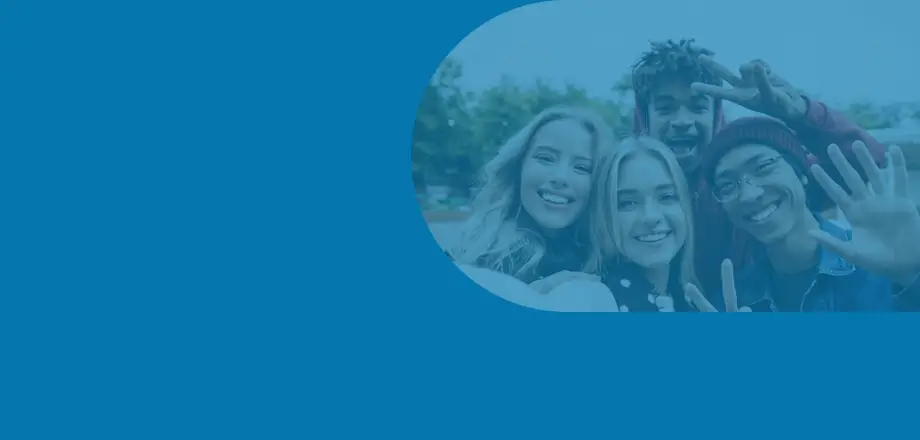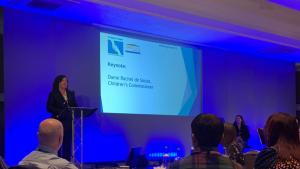Keynote Speech at St Mary’s SARC conference
‘Protecting children in the digital age’
Thank you so much for having me here to speak today.
I want to take this opportunity to sincerely thank St Mary’s, and all of you here today, for the work you do with children. My team have recently been speaking to children who have been victims of sexual abuse, and it is overwhelmingly clear how important it is that they get the right response after enduring this terrible trauma. The care, empathy and diligence you show can be transformative, and indeed lifesaving.
Since I took up my role as Children’s Commissioner for England, it was obvious to me that to truly promote and protect the rights of children – as is my statutory role – the online world had to be one of my key priorities. Children don’t think – as adults do – about the ‘online’ and ‘offline’ world. For children, the worlds are one, and we need to take their safety online as seriously as we do offline. We must be the adults they need us to be and provide safety in these spaces.
So today I want to talk to you about some of the work I have undertaken so far to better understand children’s online lives. There are of course a myriad of ways that children need to be protected from sexual abuse online – including protecting them from image based abuse and online grooming. But I want to particularly focus today on the harm of their exposure to pornography.
Two years ago, I was delighted to be commissioned by Government to provide advice on children’s needs and voices in the online world. Children are born into a world of 24-hour digital connection, yet it is a world that they did not create. It is also a world which, far too often, does not have their best interests and safety at heart. I undertook the commission as I wanted to make sure that as we try to navigate this territory, the voices of children are at the heart of all we do.
Children know that there are numerous benefits to the online world. Never before has a generation been so well-informed and connected with one another, with boundless opportunities for play, learning and creativity in digital spaces.
But they also want us to step up to the plate and understand the risks they face as well. Through talking to children, I have become increasingly aware of the dangers of an unregulated internet, where so often companies turn a blind eye to children’s safety in pursuit of shareholder interests and the bottom line.
Algorithms, which are designed to capture and retain users’ attention, can lead children into dark and inescapable cycles, as we saw with the tragic cases of Frankie Thomas and Molly Russell.
More insidiously, constant and repetitive exposure to certain types of content can shape the way that children view themselves, and treat others.
Addictive algorithms, coupled with poor content moderation, ineffective complaints systems and a lack of age assurance, results in a risky setting for childhood.
From speaking to parents, and as a former school leader myself, I know how utterly bewildering the online world can seem. It feels like each week brings a new trend, a new platform, as well as fresh risks to children. Parents tell me that protecting their child online, particularly as they grow older, can feel like a daunting and near impossible task.
So, I worked with young people, aged 16 to 21, to write a guide for parents on managing online safety – “The things I wish my parents had known”. Our young people were clear about what they wanted: for their parents to take an active stake in their online life, to have proactive conversations, and to stay well-informed and ready to step in if something went wrong.
Really, this is the bread and butter of parenting: communication, empathy and boundaries.
But tech firms aren’t yet making this easy for parents, and I think there is so much more that they should be doing, in order to support parents and to enable children to thrive online. This means making platforms safe by design, and enabling parents to take an active stake in their children’s online lives.
Sadly, I don’t think that tech firms will take action in these areas until they are forced to. This is why, as an urgent priority, we need the Online Safety Bill on the statute book.
I believe we are getting closer to that Bill finally becoming an Act, with debates taking place in the House of Lords as we meet. I am pleased that I will be a statutory consultee on the Codes of Practice that will sit alongside the Act, so I can continue to ensure children’s needs are prioritised. But it is essential to keep the pressure up.
One of my priorities for the Online Safety Bill has always been to ensure that children are protected from being exposed to pornography. This January I published a report exploring children’s relationship with porn.
I carried out a survey of 16-21 year olds, and most of those – 64% -said that they had seen pornography online. It’s likely this is an underestimate, as even in anonymous surveys people often don’t admit to watching porn. But we have to accept that we are living in a world where most children have seen pornography. And many children are first exposed to pornography at a very young age. 10% had seen it by age nine, 27% had seen it by age 11 and 50% of children who had seen pornography had seen it by age 13.
I was surprised that the place that children were most likely to have seen pornography wasn’t adult porn sites, but was actually Twitter. 41% of young people reported having seen pornography on Twitter. Dedicated pornography sites came next, followed closely by Instagram, Snapchat and search engines. According to my survey, Twitter is the only platform to outperform adult sites in exposing young people to pornography.
Sometimes children and young people are seeking this material out themselves – 50% of those who had seen porn said they look for it themselves – but similar proportions said they were sent it or shown it by others.
I was particularly concerned that 36% of 18-21 year olds had actively sought out pornography involving at least one sexually violent act.
The young people we spoke to for this research said that they felt porn was shaping their generation’s view of sex.
One 18 year old boy said:
‘Many heterosexual men grow up to have certain expectations of what a woman’s body looks like and how to treat women when having sex, and in general. A lot of that is actually just abuse.’
A sixteen-year-old girl said:
‘I think it can help people discover what they like within sex. It can help them discover who they are a bit more. But I definitely think that the bad of pornography overshadows the good. Because even if they are discovering, they are not discovering other things like good communication, like consent’.
This worries me a great deal. Especially when combined with their views on sexual violence or aggression. A staggering 47% of respondents aged 16-21 stated that girls ‘expect’ sex to involve physical aggression, and 42% stated that most girls ‘enjoy’ acts of sexual aggression.
I will soon be publishing further research which explores whether there is a relationship between what children see in pornography, and what happens in cases of child-on-child sexual abuse. I used my statutory powers to access the transcripts of Achieving Best Evidence video-recorded interviews from one police force, as well as the referral forms for a SARC. My team analysed the language used in these, searching through them for some of the specific acts that are frequently seen in violent pornography. I wanted to understand if the violent and degrading scenes that occur in pornography are being played out in the types of harmful sexual behaviour children display. It is unlikely anyone will ever be able to absolutely prove whether pornography causes sexual violence, or the form it takes.
But when we see violent acts that commonly take place in pornography also occurring in these terrible cases of sexual abuse, and we combine that with what children and young people themselves tell us about the influence that pornography has, I believe we have a stronger case than ever for ensuring we protect children from the harms pornography can cause.
I will continue to work to ensure that the Online Safety Bill, and its accompanying Codes of Practice, are as strong as they can be, and that children’s relationship and sex education appropriately addresses the harms porn can cause.
And this work is only the beginning for me. This recent research has included analysis of individual reports of children who have experienced sexual abuse. I feel a profound sense of duty towards the children who have endured this appalling crime. I have committed to further work to ensure that they are supported in every way possible to recover and have access to justice. I hope that I will be able to work with all of you here today to achieve that.






